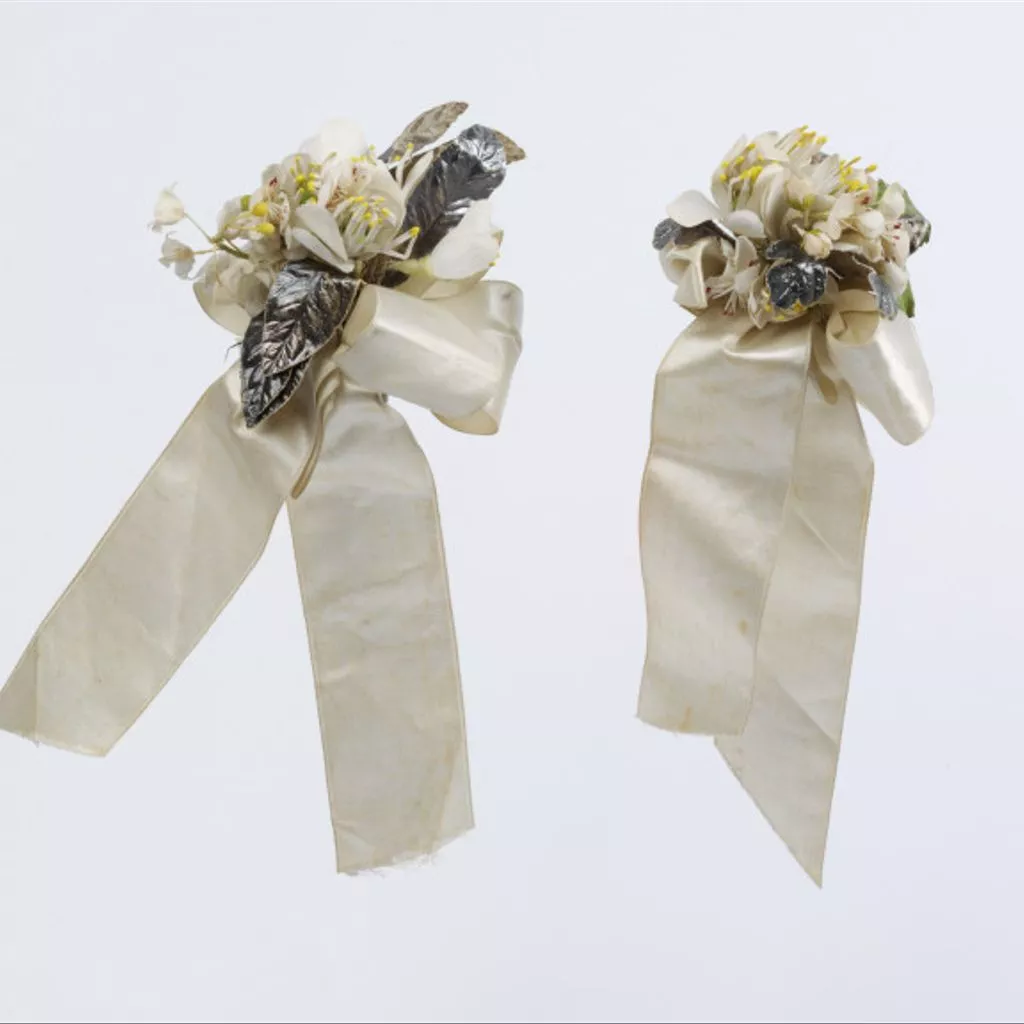Description
Wedding accessories from the Nugée family
Many wedding artefacts are preserved because marriage is so significant an event in the lives of the participants. Some pass from one generation to the next, becoming family heirlooms. The Nugée family kept this group of fragile objects because of their importance to the family history. The objects conjure up the romantic prettiness typical of many Victorian weddings.
Shoes
Chapelle
Paris, France
1854
Silk satin, cotton and leather
V&A: T.4:1, 2-2008
Wreath
Britain
1854
Feather and silk-wrapped wire
V&A: T.6-2008
Wedding favours
Britain
1854
Cotton, silk, paper and wire
V&A: T.7, 8-2008
Bridesmaid's fan
Britain
1854
Paper leaf with metal spangles, wooden sticks and guards
Associated with the wedding of Elizabeth Wroughton Richards and Reverend Andrew Nugée, 8 August 1854
V&A: T.14-2008
Shoes
France or Britain
1887
Silk satin, cotton and leather
Associated with the wedding of Edith Elizabeth Alston and Francis Edward Nugée, son of Andrew and Elizabeth Nugée, 1887
V&A: T.5:1, 2-2008
Collection given by Edward Nugée QC [2011]
Wedding favour, spray of cloth orange blossom on wire with silvered paper oak-leaves and silk satin ribbons, Great Britain, ca. 1854
Spray of orange blossom on piece of wire, flowers made of cloth, silvered paper oak-leaves and acorn cup, with silk satin ribbons.
Wedding favours were small mementoes that were handed out to close friends, relatives, and others connected to the wedding. At Queen Victoria's wedding in 1840, The Times reported upon the wedding favours given to the guests:
"Every lady exhibited a white favour, some of which were admirable specimens of refined taste. They were of all sizes, many of white satin riband, tied up into bows and mixed with layers of rich silver lace. Others merely of riband intermixed with sprigs of orange flower blossom."
By 1840, imitation orange blossom was a popular trimming for weddings. This wedding favour, which is associated with a 1854 wedding, is on a less grand scale than Queen Victoria's favours. However, the concept is similar in that it features cloth orange blossoms, silvered paper leaves, and cream silk satin ribbon.




